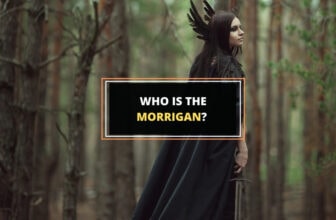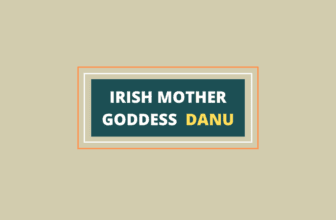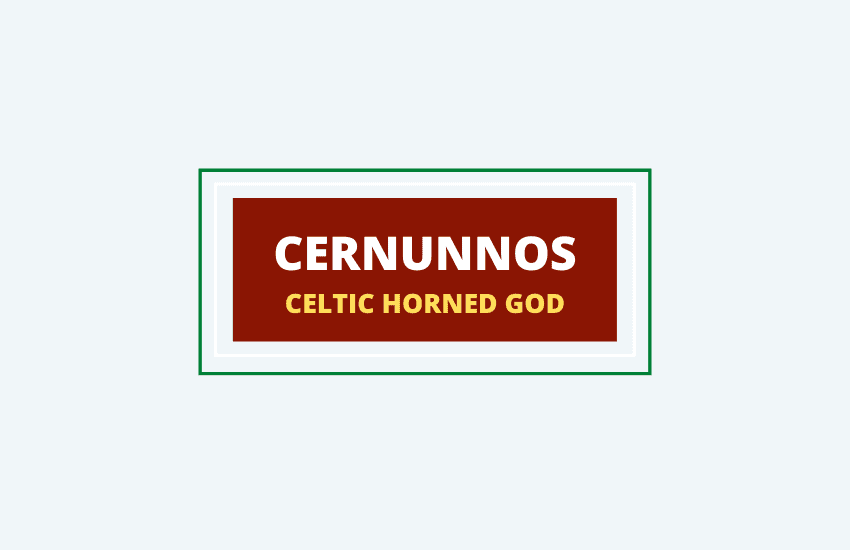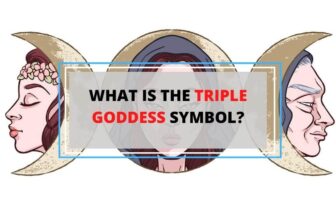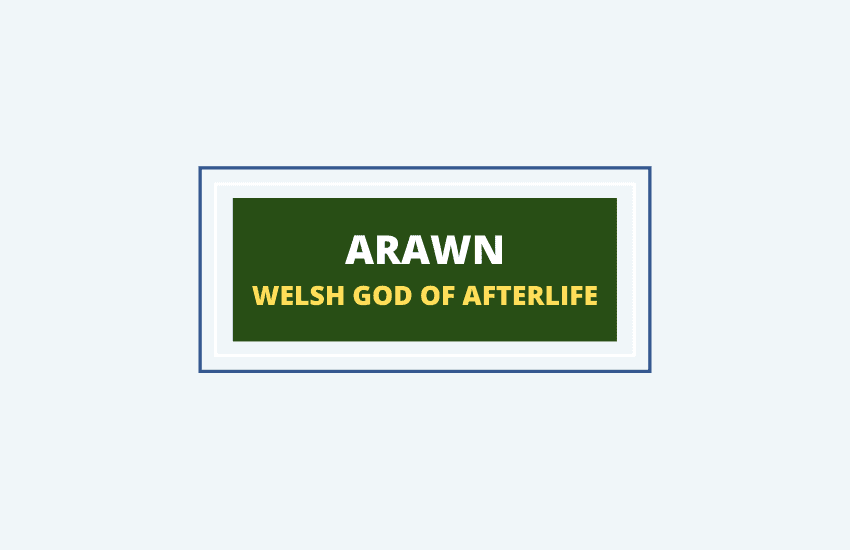
Table of Contents
According to Welsh mythology, Arawn is the ruler of the realm of Annwn, or Otherworld – the idyllic resting place of the deceased. As a responsible guardian of his realm, Arawn is just and fair, honoring the promises he makes, but tolerating no insubordination. Arawn represents honor, duty, war, revenge, death, tradition, terror, and hunt.
As the king of Annwn, the heaven of peace and plenty, Arawn was also known as the Virtuous, the Provider, and the Guardian of the Lost Souls. However, being associated with death, Arawn was often feared and considered evil.
Arawn in Welsh Folklore
Some scholars believe that Arawn’s name might have a Biblical origin. It’s thought that it stems from the Hebrew name Aaron, who was Moses’s brother. Aaron can be translated as exalted.
Others associated Arawn with another Gaulish god – Cernunnos, as they’re both closely connected to hunting. Another theory claims that Arawn is the Welsh counterpart of the Celtic deity Arubianus because their names are quite similar.
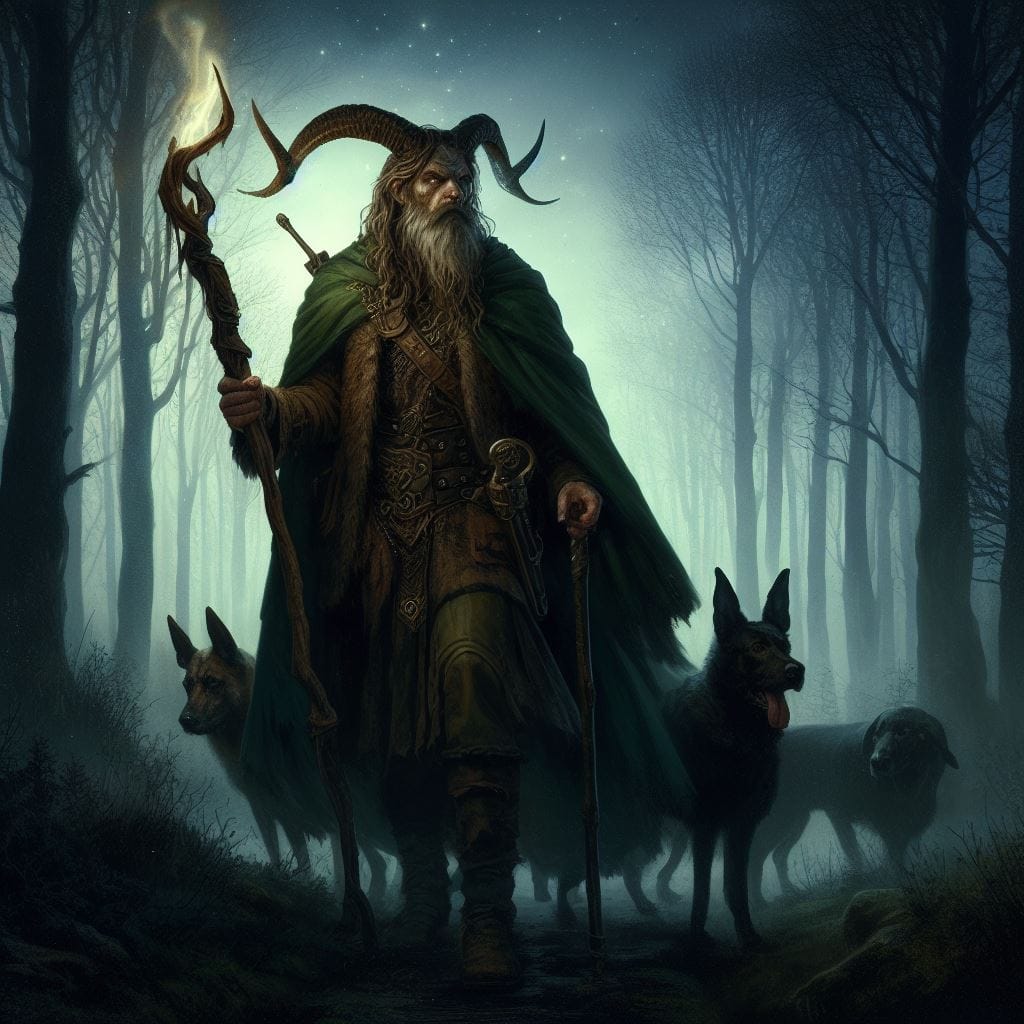
Arawn’s Role in the Mabinogion
Arawn plays an important role in the First and the Fourth Branch of the Mabinogion – the collection of Welsh myths comprising of twelve tales. In the First Branch, Arawn encounters the lord of Dyfed, Pwyll.
Pwyll found himself in the realm of Annwn by mistake. He had set his hounds to pursue a stag, but once he reached a clearing in the forest, he found a different pack of hounds feeding on the stag’s carcass. These hounds were of peculiar appearance; they were exceptionally white with bright red ears. Even though Pwyll recognized that the hounds belonged to the Otherworld, he chased them off in order for his hounds to get fed.
Pwyll was then approached by a man in a gray cloak riding a gray horse. The man turned out to be Arawn, the ruler of the Otherworld, who told Pwyll he needed to be punished for the great discourtesy that he had committed. Pwyll accepted his fate and agreed to trade places with Arawn, taking each other’s forms for one year and one day. Pwyll also agreed to fight Arawn’s greatest enemy Hafgan, who wanted to merge his kingdom with Arawn’s realm and rule over the entire Otherworld.
To avoid another discourtesy, Pwyll honored Arawn’s beautiful wife. Even though they slept in the same bed every night, he refused to take advantage of her. After one year had passed, Pwyll and Hafgan faced each other in combat. With one mighty struck, Pwyll heavily wounded Hafgan but refused to kill him. Instead, he called upon his followers to join Arawn, and with this act, the two kingdoms of Annwn were unified.
Pwyll proved respect to Arawn, and they both remained chaste during this period. They became true friends and exchanged gifts, including hounds, horses, hawks, and other treasures.
After Pwyll’s death, the friendship continued between Arawn and Pwyll’s son Pryderi. This relationship is described in the Fourth Branch of Mabinogi, where the new lord of Dyfed, Pryderi, received many gifts from Arawn, including the magical pigs from Annwn. The trickster and magician Gwydion fab Don from Gwynned stole these pigs, leading Pryderi to invade Gwydion’s land. The dispute resulted in a war, and Pryderi managed to kill the trickster in single combat.
Arawn in The Battle of the Trees
There’s a poem called Cad Goddeu, or The Battle of the Trees, in the Book of Taliesin, that tells the story about Arawn and Amatheon. According to the poem, Amatheon stole a hound, a buck, and a lapwing from the realm of Annwn.
Arawn started pursuing Amatheon with an intent to punish him for his crimes. The angry god summoned all kinds of monsters and strengthened them with magic, and The Battle of the Trees began.
Amatheon also summoned help – his brother Gwydion. Gwydion used his magic as well and called upon the great trees to protect them from Arawn. The battle ended with Arawn’s defeat.
The Hounds of Annwn
According to Welsh folklore and mythology, the Hounds of Annwn, or Cwn Annwn, are ghostly hounds of the Otherworld that belonged to Arawn. During early spring, winter, and fall, they would go on the Wild Hunt, riding through the night skies and hunting the spirits and wrongdoers.
Their growling was reminiscent of migrating wild geese, loud from a distance but growing more silent as they would approach. It was believed that their howling is the omen of death, gathering the wandering spirits who would be then taken to Annwn – their final resting place.
Later, Christians named these legendary creatures The Hounds of Hell, and thought they belonged to Satan himself. However, according to the Welsh folklore, Annwn wasn’t hell, but the place of eternal youth and bliss.
Symbolic Interpretation of Arawn
In Celtic mythology, Arawn is portrayed as the lord of the Underworld and death. Besides ruling over the realm of the dead, he’s also known as the god of revenge, war, and terror. His character is mostly shrouded in mystery. In many tales, he appears as an obscure figure dressed in gray clothing, riding his gray horse.
Let’s break down some of these symbolic meanings:
1. Arawn as the god of Justice, War, Revenge, and Honor
As the lord of the dead and the war leader of his realm, Arawn dwells in Annwn – the Underworld or Afterlife. Annwn is the dead’s final resting place, where the food is plenty, and the youth is endless. Being responsible for his kingdom and maintaining the laws of the dead made Arawn a just deity but somewhat vengeful. He couldn’t tolerate disobedience and delivered justice with an iron fist.
As we could see from Mabinogion’s story, he punishes Pwyll for his insubordination and for breaking of the law. However, he holds his word holy, and in the end, honors the promise he made to Pwyll.
2. Arawn as the God of Death and Terror
Arawn, the ruler of the Underworld, rarely reaches the world of the living. Since he can’t physically enter the mortals’ lands, he sends his hunting hounds there, whose howling brings death and terror. During early spring, autumn, and winter, these ghostly white hounds with red ears go on the hunt for the roaming spirits. They also catch those who try to escape to the land of the sun and guide them back to Annwn.
Therefore, Arawn represents the natural law of death and the concept that all things have to end, including life.
3. Arawn as the God of Magic and Trickery
Arawn is characterized as a figure prizing justice and punishing wrongdoing. On the other hand, we could also interpret him as being the master of magic and trickery. Many legends and stories emphasize this gray nature and playfulness of the god.
In the First Branch of Mabinogion, Arawn punishes Pwyll for his wrongdoing, and they switch places. This way, he dispenses justice, but at the same time, he uses Pwyll, in the form of Arawn, to fight his long time enemy. He manages to dodge his own responsibility, making someone else complete what he was originally tasked with.
According to some tales, Arawn also had a magical cauldron, with powers to resurrect the dead, rejuvenate, and boil food only for the brave.
Arawn’s Sacred Animals
According to Welsh mythology, Arawn is mostly associated with hounds and pigs. As we have seen, Arawn’s hounds, or the so-called The Hounds of Annwn, represent death, guidance, loyalty, and hunting.
Arawn sends magical pigs as gifts to Pwyll’s son. According to the Celtic tradition, pigs represent abundance, bravery, and fertility.
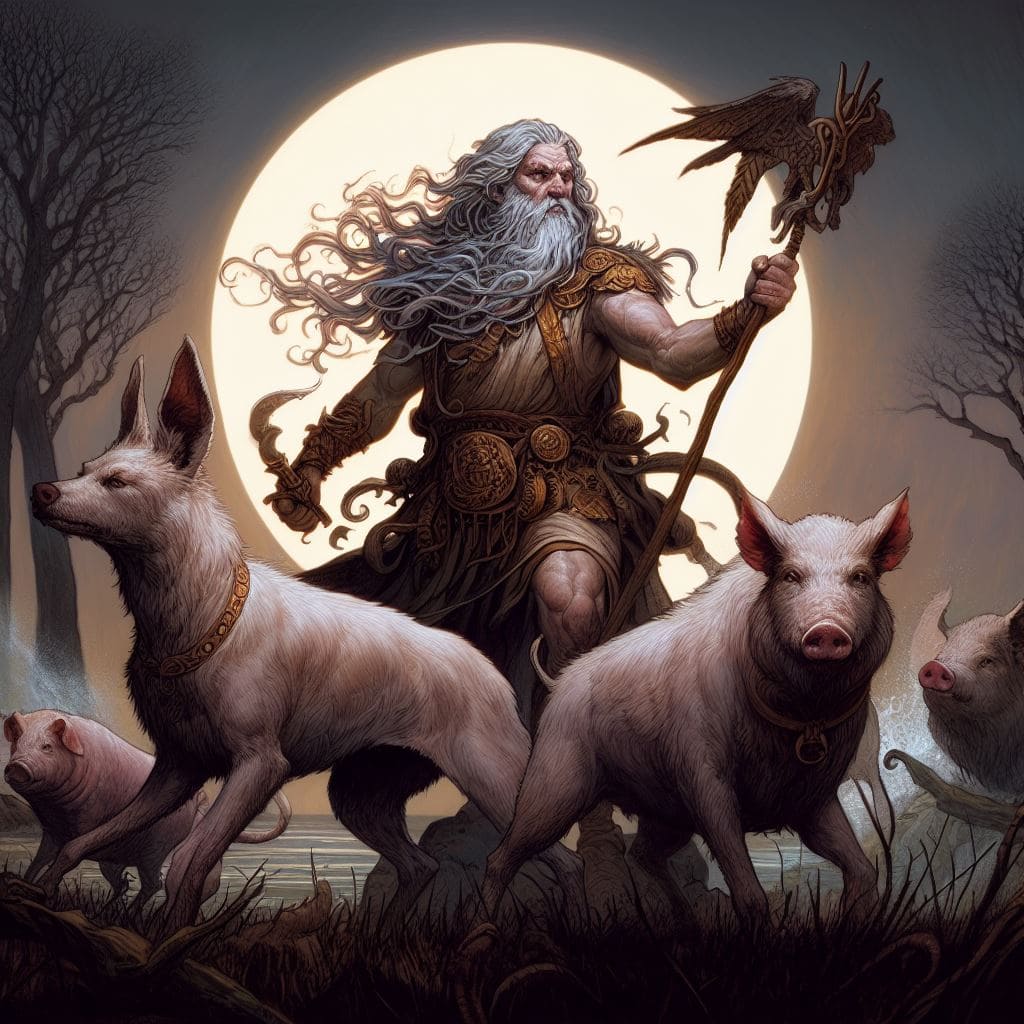
Arawn’s Seasons
Arawn and his hunting hounds are mostly active during the seasons of autumn and winter. Throughout autumn, the leaves change their color and fall. This process symbolizes change. It also brings a certain melancholy because we know that the change it represents means long and cold winter. If autumn represents our human maturity, then winter symbolizes an end, old age, and death.
Arawn’s Sacred Colors
Arawn’s sacred colors are red, black, white, and gray. In Celtic folklore, the color red was most commonly associated with death and afterlife and was often considered an omen of bad luck.
Similarly, the colors white, black, and gray combined usually signify something evilas well as darkness, danger, and the Underworld.
Arawn’s Sacred Day
As the guardian of the dead, Arawn is tasked to watch over his realm and prevent the spirits from escaping it. The only exception is the night of Samhain; the time when the gate to the Otherworld is unlocked and opened. During this time, all the souls of the dead, as well as supernatural beings, are allowed to enter the world of the living. Therefore, Samhain is the Celtic equivalent to the Western Halloween, celebrating those who have passed away.
To Wrap Up
Arawn is the powerful god of war, revenge, and the wild hunt. He wasn’t a vicious figure but only the dutiful guardian of his kingdom, keeping the souls of the dead safe, while preserving and maintaining the balance of life.




